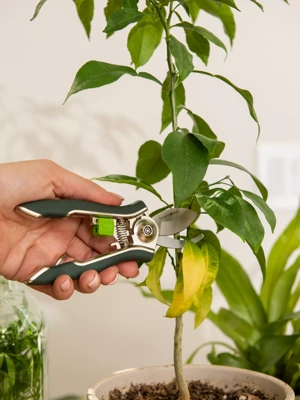How to Care for a Begonia Maculata

Botanical Information on Begonia Maculata
Begonia Maculata, also known as the Polka Dot Begonia, belongs to the Begoniaceae family. Originating from the rainforests of Brazil, this species thrives in warm and humid conditions. Its distinctively speckled leaves make it a favorite among plant lovers, adding a touch of natural artistry to any space.
Common Cultivars and Types of Begonia Maculata
Several cultivars and types of Begonia Maculata exist, each with its unique charm. The most popular cultivar is the 'Wightii,' featuring silver spots on dark green leaves. Others include the 'Tamaya' and 'Troutman,' each offering variations in leaf size and coloration.
Best Growing Conditions for Begonia Maculata
How much light is needed for Begonia Maculata?
Begonia Maculata thrives in bright, indirect light. Place your plant near a window with filtered sunlight, avoiding direct exposure to harsh rays. A spot with morning sun or dappled shade works wonders for its well-being.
What type of soil is recommended for Begonia Maculata?
A well-draining, peat-based mix is ideal for Begonia Maculata. Keep the soil consistently moist but not waterlogged. Ensure your pot has drainage holes to prevent water stagnation.
Does Begonia Maculata require certain humidity levels?
Maintain a moderate to high humidity level around Begonia Maculata, mimicking its native rainforest habitat. You can achieve this by misting the leaves regularly or placing a tray of water nearby.
How to Care for Begonia Maculata
How much and how often do Begonia Maculata need to be watered?
Water your Begonia Maculata when the top inch of soil feels dry. Adjust the frequency based on your home's humidity levels, aiming to keep the soil consistently moist but not soggy.
What fertilizer is recommended for Begonia Maculata?
Feed your Begonia Maculata with a balanced liquid fertilizer every 2-4 weeks during the growing season (spring and summer). Reduce feeding in fall and winter when the plant enters a dormant phase.
Do you need to prune or trim Begonia Maculata?
Pruning is optional but can help maintain a bushy and compact shape. Trim leggy stems or remove damaged leaves with clean scissors. This encourages new growth and keeps your plant looking its best.
How to repot Begonia Maculata
Repot your Begonia Maculata every 1-2 years or when it outgrows its current container. Choose a pot that is slightly larger, refresh the soil, and ensure good drainage.
How to propagate Begonia Maculata
Propagate Begonia Maculata through stem cuttings. Take a healthy cutting with at least one leaf and a node, dip it in rooting hormone, and plant it in a pot with moist soil. Keep the cutting in a warm, humid environment until roots develop.
Begonia Maculata Pests and Problems
What are some common Begonia Maculata pests and diseases, and how can you control them?
Watch out for spider mites, aphids, and powdery mildew. Control pests by regularly inspecting your plant, wiping leaves with a damp cloth, and using insecticidal soap if needed.
What are common signs of stress that Begonia Maculata shows?
Begonia Maculata may display stress through yellowing leaves, drooping stems, or leaf drop. Adjust watering, lighting, and humidity to address stress factors promptly.
Are Begonia Maculata toxic to pets?
Yes, Begonia Maculata is toxic to pets. Keep it out of reach of cats, dogs, and other curious animals to avoid potential ingestion issues.
Begonia Maculata FAQs
Can Begonia Maculata tolerate low light conditions?
While it prefers bright, indirect light, Begonia Maculata can tolerate lower light levels. However, it may result in slower growth and fewer blooms.
How often should I fertilize my Begonia Maculata?
During the growing season (spring and summer), fertilize every 2-4 weeks. Reduce or stop fertilizing in fall and winter when the plant is dormant.
Is it normal for Begonia Maculata to lose some leaves?
Yes, some leaf drop is normal as older leaves naturally die off. However, excessive leaf loss may indicate stress, so check and adjust care conditions accordingly.
Incorporating these simple guidelines into your Begonia Maculata care routine will ensure a thriving and visually appealing houseplant.
Last updated: 03/25/2024
Print this Article:
Related items
Get the Dirt
Stay up to date on new articles and advice. Please fill out the information below.









